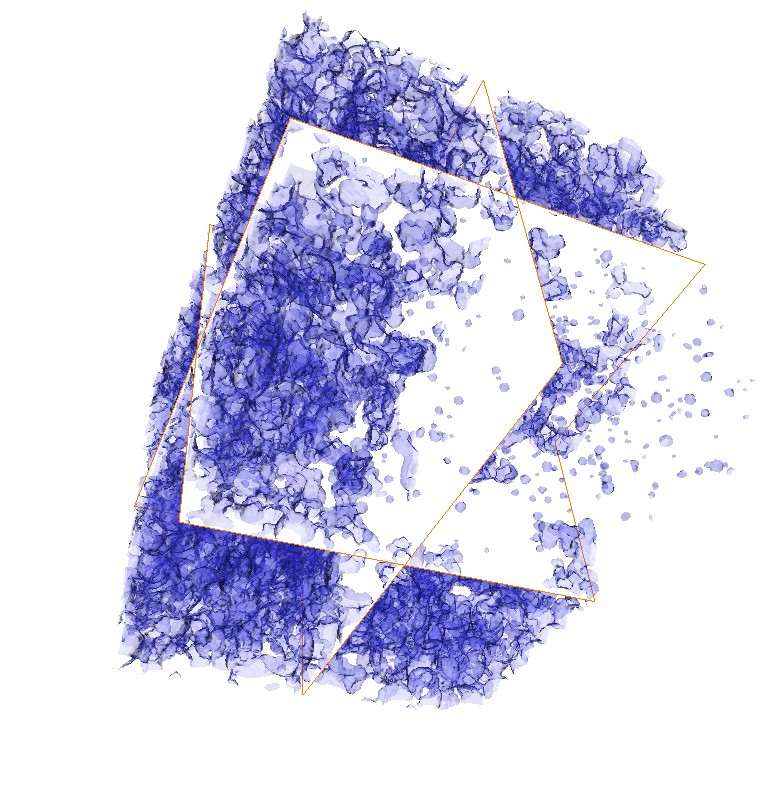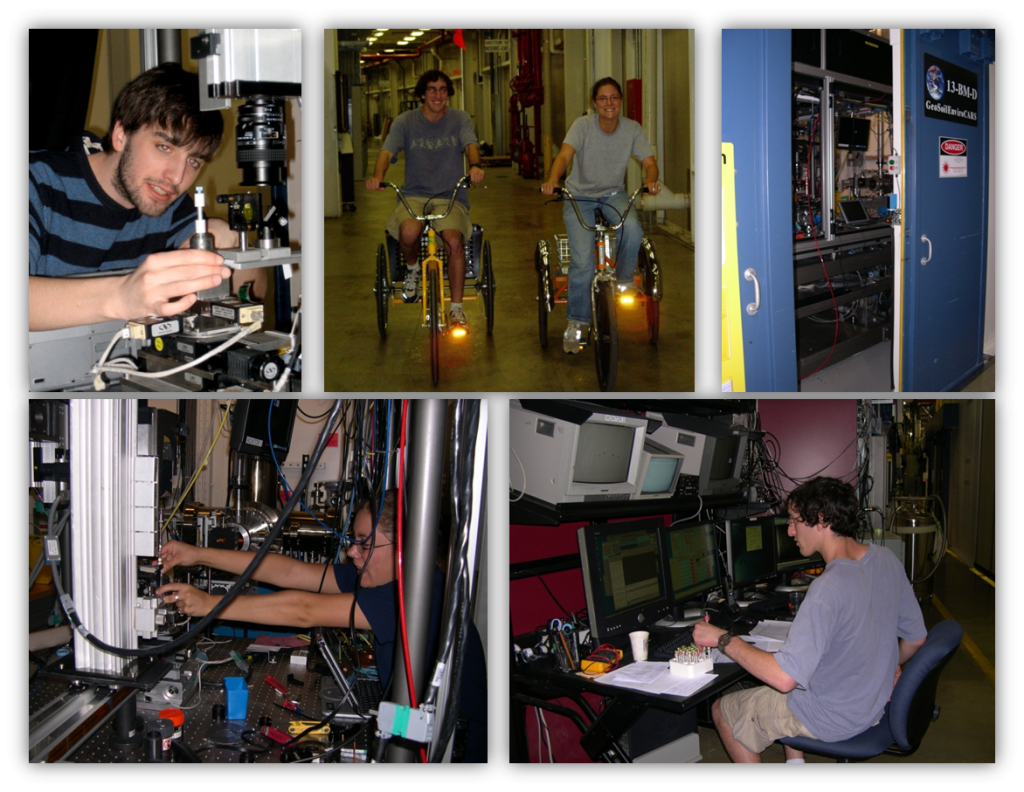return to Research Projects
Measurement & Microtomographic Imaging of the Air-Water Interface in Unsaturated Porous Media
This work was supported by grants from the National Science Foundation Earth Sciences Division, the Petroleum Research Fund, & Vermont EPSCOR

In this project, we examined multiple experimental methods for determining the air-water interfacial area in unsaturated subsurface porous media. In other words, we are trying to measure how big the surface area of water is when it is held along with air bubbles within the three-dimensional pore network of stuff like soils and aquifer materials.
Porous materials hold water like a sponge — by adsorbing thin water films onto surfaces and by filling pores with water through capillary action — which creates a complicated interfacial morphology that isn’t easy to measure (length x width calculation doesn’t cut it!).
We care about the air-water interface in soils for many reasons, but here are two:
- a whole host of contaminants — both molecules and colloids, such as nanoparticles and pathogens — accumulate at the air-water interface. Because most of the interface is relatively immobile, this accumulation means the size of the interface influences how quickly contaminants migrate through the subsurface — for example, how quickly pesticides might infiltrate through the subsurface to your town’s drinking water supply.
- the interfacial area influences the kinetics of mass and energy transfer across the interface, with large interfacial areas increasing transfer rates and small interfacial areas slowing things down. This has implications, for example, for the rates of volatilization and dissolution of volatile contaminants.
We have helped develop new techniques for measuring air-water interfacial areas. The pretty picture above is from some of our published work (see below) describing techniques for imaging the air-water interface and demonstrating the reliability and validity of extracting quantitative estimates of air-water interfacial areas from such images. These high-resolution 3D images — obtained using synchrotron X-ray microtomography — are essentially souped up CAT scans. We performed this work at Argonne National Laboratory’s Advanced Photon Source (APS). Below are some photos of the facility and my group at the APS.
We have also shown one particular conventional approach to measuring air-water interfacial areas is substantially compromised by surfactant-induced flow. Although researchers had long acknowledged that surfactant-induced flow might be occurring, none of us anticipated just how important this process is and to what degree it may undermine the method. A hydrogeologist who specializes in mathematical modeling of subsurface unsaturated flow processes — Dr. Eric Henry at University of North Carolina-Wilmington, is collaborating with our group to lend further insight into the process of surfactant-induced flow.
 Project Publications (undergraduate authors are underlined)
Project Publications (undergraduate authors are underlined)
Costanza-Robinson, M. S., Henry, E. J. Surfactant-induced flow compromises determination of air-water interfacial areas by surfactant miscible displacement. Chemosphere, 2016, In press.
Costanza-Robinson, M. S., Zheng, Z., Henry, E. J., Estabrook, B. D., Littlefield, M. H. Implications of surfactant-induced flow for miscible-displacement estimation of air-water interfacial areas in unsaturated porous media. Environmental Science and Technology 2012, 46, 11206-11212, doi: 10.1021/es303003v.
Costanza-Robinson, M. S., Estabrook, B. D., Fouhey, D. F. Representative elementary volume estimation for porosity, moisture saturation, and air-water interfacial areas in unsaturated porous media: Data quality implications. Water Resources Research 2011, 47, W07513, doi:10.1029/2010WR009655.
Costanza-Robinson, M. S.; Harrold, K. H.; Lieb-Lappen, R. M. X-ray microtomography determination of air-water interfacial area-water saturation relationships in sandy porous media. Environmental Science and Technology 2008, 42, 2949-2956, doi: 10.1021/es072080d.
